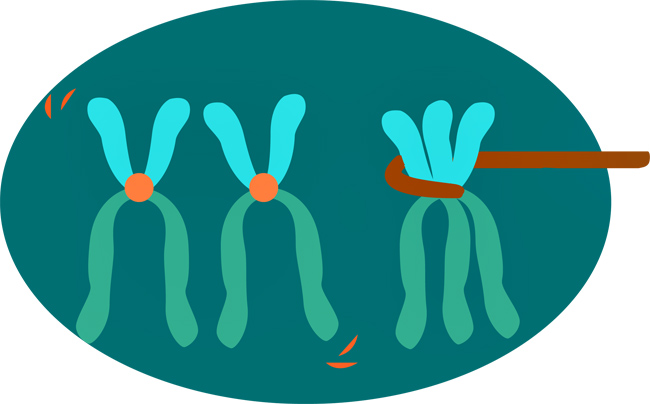Check out Daily Texan Multimedia's portrayal of this week's Science Scene.
Most of us are born with 46 chromosomes, but because of genetic defects some people are born with one more. This “trisomy” often proves fatal either before or right after birth, although not always. For those with the defect who survive to adulthood, it often has several life-altering effects that are difficult to treat. In the case of those who have Down syndrome, a common trisomy, early aging and leukemia are par for the course. However, a group from the University of Washington developed a technique for removing a trisomy from human cells grown in the lab, which is a major step toward developing effective treatments. While the technique can’t be used to prevent trisomies from occurring and specific applications are still a long way off, it could eventually make major life-extending differences for those with trisomy-related disorders.
Don’t Know What to Give a Friend? Why Not Myelin?
New research in mice suggests that being around friends isn’t just a great way to unwind — it may also have significant positive effects on the brain. Mice isolated from other mice for eight weeks showed decreased production of myelin (the fatty white matter that helps neurons signal effectively) in the brain. When the amount of myelin decreases, it’s bad news, often associated with depression as well as multiple sclerosis or Krabbe disease. When reintroduced to regular mice, the once-isolated mice showed less interest in befriending them. However, given time, they learned to socialize again, at which point the myelin production returned to regular levels, indicating that the effects of social isolation, though damaging, aren’t permanent.
Flight for a Massive Pterosaur
Flight is easy when you’re a small, lightweight bird. However, with an increase in size comes an increase in mass, making it harder to stay in the air, especially for the largest flying animal ever to roam the earth, a pterosaur known as Quetzalcoatlus northropi. This flying reptile had a five-foot skull atop a body that stood as tall as a modern giraffe, but the creature only weighed as much as an adult human. Still, in order to fly, it required a wingspan larger than that of an F-16 fighter jet. According to new computer simulations performed at Texas Tech, Quetzalcoatlus couldn’t do a standing takeoff like most flying birds and instead had to rely on a running start like a passenger airplane, likely down a sloped incline or off of a cliff. The simulation also demonstrated that the large wings were unwieldy and that Quetzalcoatlus probably spent most of its time gliding and relying on updrafts to fly rather than arm-flapping.
Blicking Babies
One of the most astounding things about the first few years of a child’s life is the ease with which language develops. Teenagers struggle through foreign language classes in high school and few develop anything approaching fluency, but babies can pick up multiple languages with little effort just from simple immersion. Researchers at Northwestern University have found that even at 14 months, when babies aren’t exactly going to wow adults with their conversational skills, they still have a strong understanding of the purpose of words. The scientists discovered that they could make babies do something silly, like turn off a light switch with their forehead, if they assigned the action a verb – in this case “blicking” – when they demonstrated it. However, if they just drew attention to the action – for instance by saying, “Look at what I’m doing!” – the baby would not mimic the action. The research shows just how powerful language can be: not only do babies learn language by listening to it, but it also seems like they may learn other, non-language related acts by using it as a guide.
Sine of the Times?
Calculators are a technological luxury that older generations didn’t have access to, and while they can be helpful tools, some question whether or not students are becoming too reliant on them. A simple study performed with only 10 test subjects — all sophomores in a competitive engineering program — showed that many of them felt helpless without a calculator by their side, even for relatively simple problems. The authors of the study found one of the biggest problems arose in a question about sine waves, where each of the subjects employed one of two different methods to solve the problem: one that involved drawing a graph, which required understanding the concept of a sine wave, and another that involved plugging values into a calculator, which did not. More than half of the engineering students — and engineering requires a strong understanding of math — opted for the less conceptual method of solving the problem. Although one can’t draw major implications from a 10-person study, the results do hint at the need for future research into whether or not calculators are helping us learn.





















